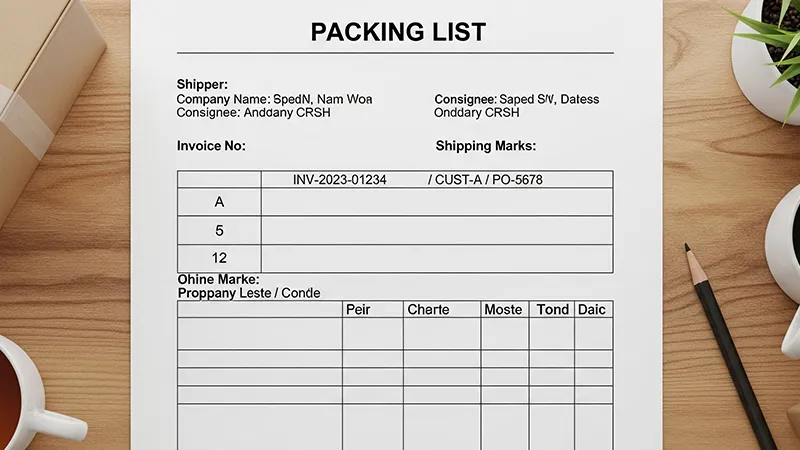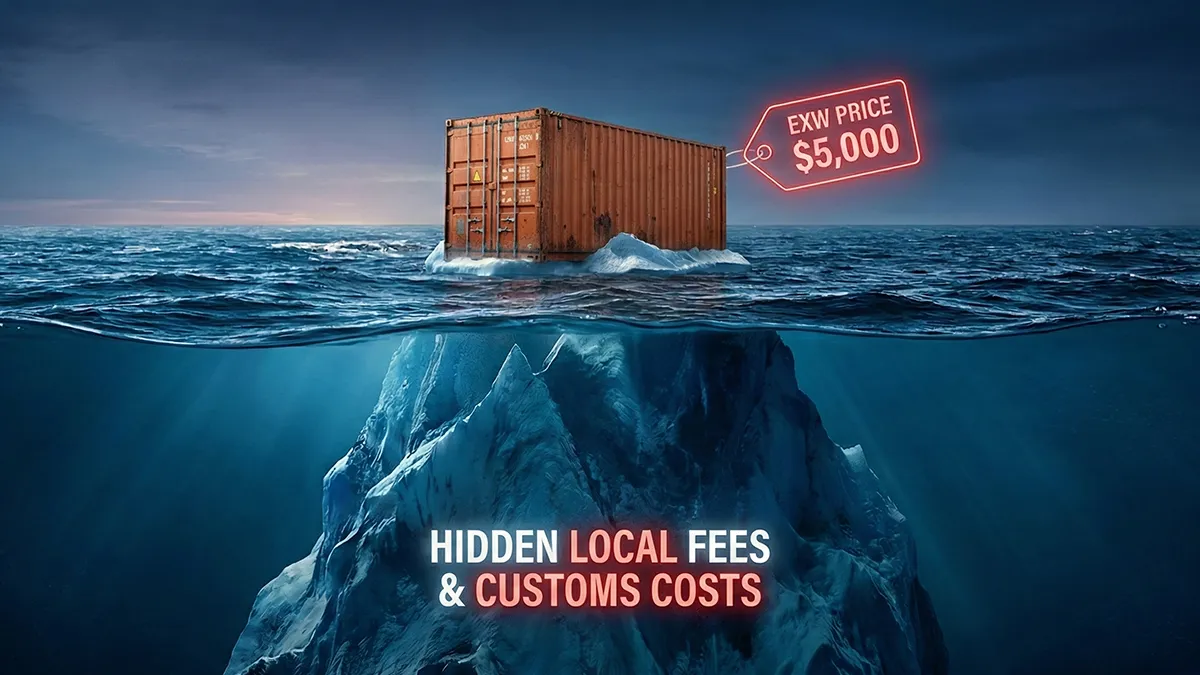What is a Packing List? A Complete Guide for Shippers

In international trade, a shipping packing list is one of the most important documents, detailing the specific contents and packaging of your goods. An accurate packaging list is essential for a smooth journey through customs, warehouses, and to your final destination. This article will provide a detailed definition packing list, explain its function and importance, and clarify the differences between it and other critical shipping documents.
Understanding what a packing list is and how to create one correctly is a fundamental skill for any importer or exporter. This guide will serve as your resource for mastering this crucial piece of documentation.
What is a Packing List?
So, what is packing list? The packing list (P/L), sometimes called a package list or shipping list, is a document used to describe the detailed packaging information of a shipment. It serves as a supplementary document to the commercial invoice. It meticulously records how the goods are packed, including the name, specifications, quantity, weight, packaging materials, and packaging method, providing a key reference for buyers, sellers, customs, and other related parties.
Its main contents include:
-
Product Name: A detailed description of each commodity.
-
Quantity: The specific quantity of each commodity within each package.
-
Weight and Size: The specific weight and size information of each individual package.
-
Packing Method: Describes how the goods are packaged, such as in cartons, on pallets, in crates, etc.
-
Shipper and Consignee Information: Includes the full name, address, and contact information for both parties.
Who Provides the Packing List?
The packing list for shipping is always provided by the seller or consignor. It is created as a supplement to the commercial invoice to allow for the inspection of goods by customs and for the consignee to verify the shipment after it arrives at the destination port. The accuracy and completeness of the shipping packing list are essential to ensure smooth customs clearance and accurate receipt of the goods.
The Importance of a Packing List in International Transport
The packing list shipping document plays several important roles in international transport:
-
Customs Clearance Convenience: When customs authorities examine goods, they classify and check them according to the information on the packing list to ensure the compliance of the goods.
-
Cargo Tracking: The packing list can help logistics companies and consignees track the status and location of specific packages within a larger shipment.
-
Loss Claim: In the unfortunate event of damage or loss of goods during transit, the packing list provides the necessary detailed evidence to facilitate insurance claims.
-
Warehouse Management: Warehouse managers use the detailed information on the packing list to arrange the proper storage and management of goods upon arrival.
The Standard Packing List Format
While the design can vary, a standard packing list format must include the following key information. Think of the list below as a guide for your own format packing list or as a sample of a packing list.
-
Packing List Name: Clearly titled, such as “PACKING LIST” or “DETAILED PACKING LIST”.
-
Number: Consistent with the invoice number for easy tracking and cross-referencing.
-
Contract Number: The corresponding sales contract or confirmation number.
-
Mark: The shipping mark displayed on the outside of the packages, used to distinguish different batches of goods.
-
Box Number: The unique number of each box (e.g., 1 of 50, 2 of 50).
-
Goods Number/Description: The name, item number, and detailed description of the goods in each box.
-
Quantity: The number of units of goods inside each box.
-
Gross Weight: The total weight of each box, including packaging.
-
Net Weight: The net weight of only the goods inside each box.
-
Box Size: The exterior dimensions of each box.
-
Total: The total number of packages, total gross weight, total net weight, and total volume of the entire shipment.
-
Signature and Seal: The signature and seal of the issuer (the shipper or their agent).
Here is a common packing list example: (You can also click here to download a standard packing list.)

Packing List vs. Bill of Lading vs. Commercial Invoice
It's common to confuse these three core documents. Here’s a breakdown of the differences.
Introduction to the Bill of Lading (B/L)
A Bill of Lading (B/L) is a legal document and a contract between a shipper and a carrier. It acts as a receipt for the goods and, in many cases, as the proof of ownership (title) required to claim the goods at the destination. It focuses on the transportation aspects of the goods. The debate of packing slip vs bill of lading is common, but in freight, the B/L is the official contract of carriage.
Introduction to the Commercial Invoice (CI)
A Commercial Invoice is a legal document that serves as the bill of sale for the transaction. It outlines the financial aspects, including the agreed price, payment terms, and value of the goods. Customs authorities use the commercial invoice to determine the duties and taxes owed on the shipment.
What is the difference between them?

| Document | Packing List (P/L) | Commercial Invoice (CI) | Bill of Lading (B/L) |
| Primary Purpose | Physical Inventory: Details what is in the boxes and how it is packed. | Financial Transaction: Details the price and value of the goods. | Contract of Carriage: Serves as a receipt, a title of goods, and a transport contract. |
| Who Issues It? | Seller / Shipper | Seller / Shipper | Carrier (e.g., the shipping line) |
| Key Information | Weights, Dimensions, Packaging Details, Marks & Numbers. | Price per unit, Total Value, Payment Terms, Incoterms. | Shipper/Consignee Info, Ports, Vessel Name, Container Number. |
Common Mistakes to Avoid on Your Packing List
Errors on your packaging list can lead to significant delays and extra costs. Avoid these common mistakes:
-
Inaccurate Information: The information must be 100% consistent with the actual goods. Any discrepancy can lead to customs inspections or the consignee rejecting the shipment.
-
Weight Discrepancy: The total weight must be consistent with the weighed weight, with a difference of no more than 3%, otherwise it may cause customs questions.
-
Missing Necessary Information: The packing list must contain all necessary information, such as the contract number, mark, and box numbers.
-
Incomplete Signature: The document must be signed and stamped by the shipper or agent.
-
Improper Format: The format should be clear, neat, and comply with international trade practices.
Frequently Asked Questions (FAQ)
-
1. What are the types of packing lists?
-
Depending on the requirements of the contract, they can be divided into different types such as detailed packing lists and neutral packing lists (which do not indicate the seller's name).
-
-
2. What are the use scenarios of packing lists?
-
While essential for customs in international trade, they are also widely used in domestic logistics and warehousing to ensure the accuracy and safety of goods.
-
-
3. What are the key points for reviewing packing lists?
-
When reviewing a packing list, focus on the accuracy of the information, its completeness, the standardization of the format, and the validity of the signatures and seals.
-
This section is designed for FAQPage Schema.
Let the Experts Handle Your Documentation

Creating accurate and compliant shipping documentation is a detailed process where errors can be costly. Our team of logistics experts, backed by 25 years of experience, manages all your documentation as part of our comprehensive freight forwarding service. We ensure your packing lists, commercial invoices, and bills of lading are flawless, paving the way for smooth customs clearance and a hassle-free shipping experience.


